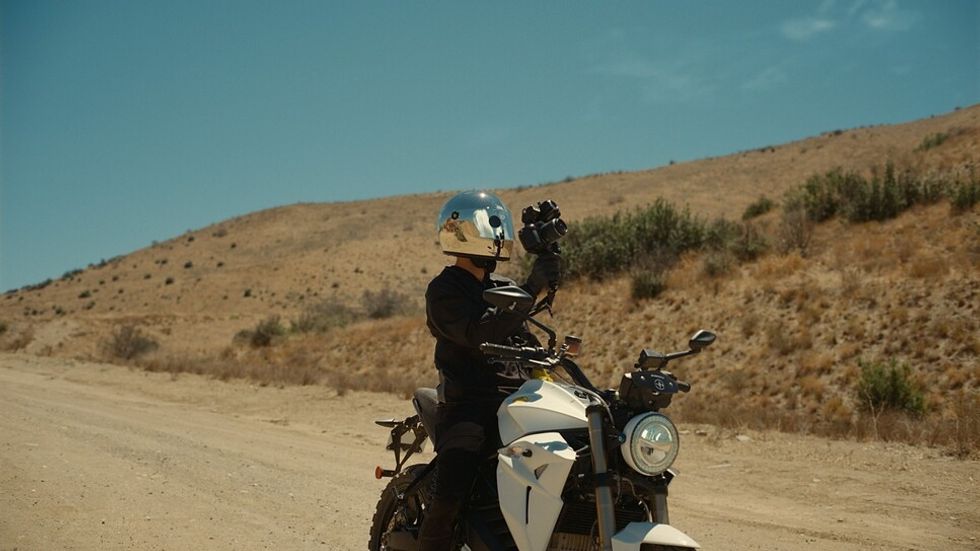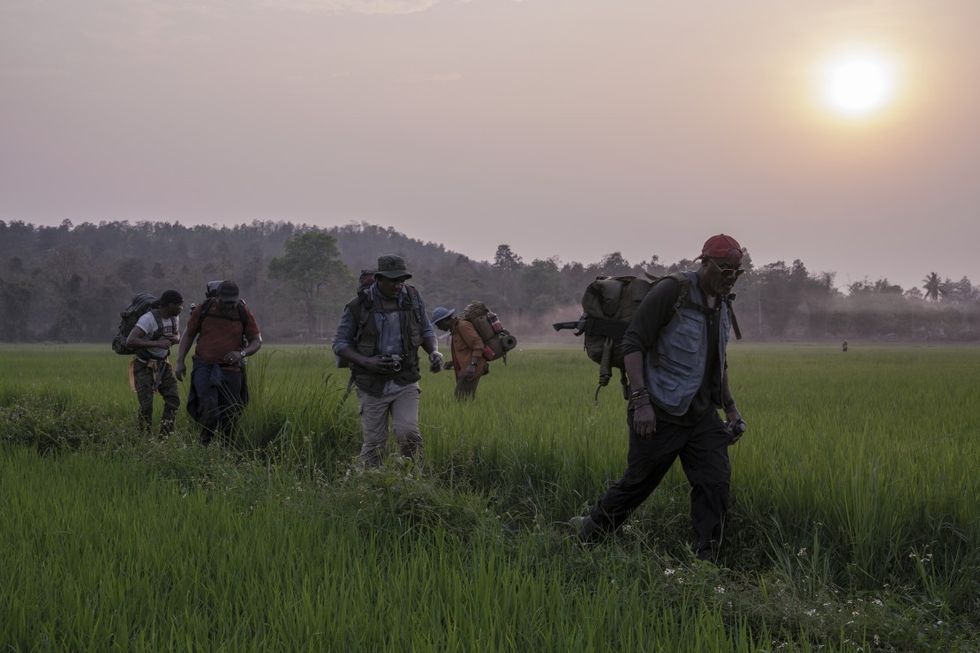Large Format, Small Space: How 'Greyhound' Puts You Right in the Middle of a WWII Naval Battle
Shot on a decommissioned WWII destroyer, Greyhound invites audiences to engage in a battle of a lifetime out in the wide-open sea.
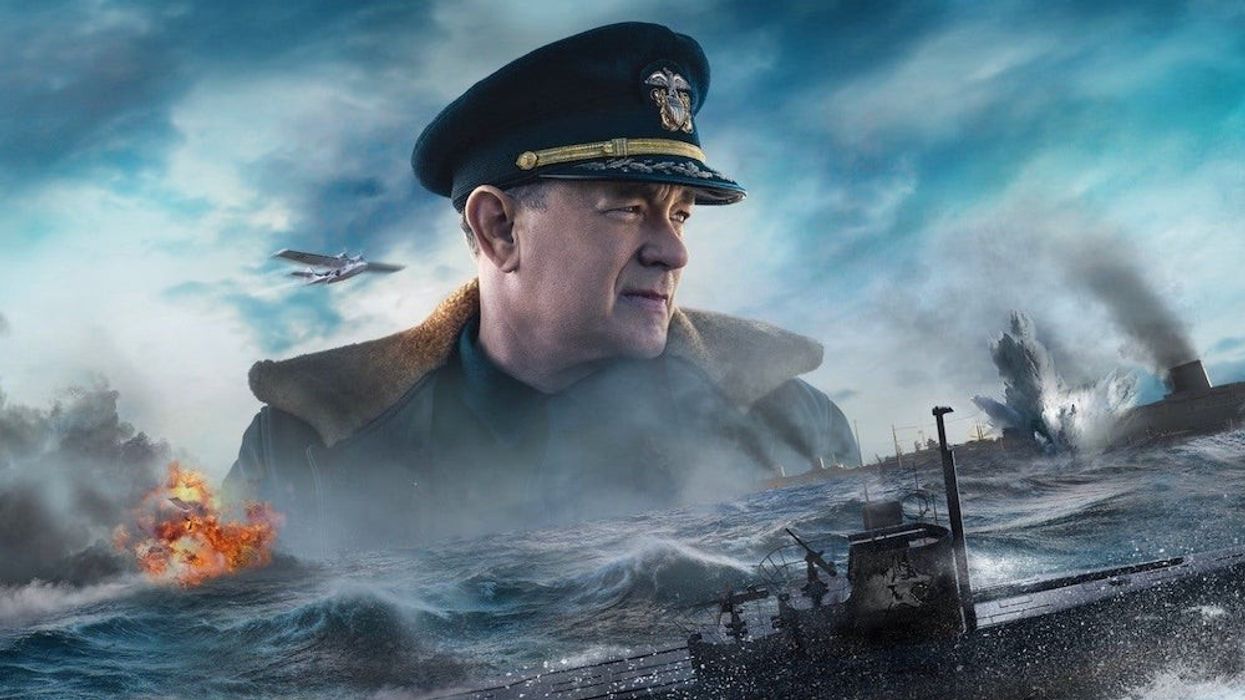
The opening scene of Steven Spielberg’s 1977 classic Close Encounters of a Third Kind, set inside an air traffic control room, is used by director Aaron Schneider (Get Low) as a tonal reference for the screenplay for Greyhound, written by and starring Tom Hanks. The scene dramatizes the audience’s first "sighting" of the UFO, except that we never see it as more than a blip on the radar screen. Similarly in Greyhound, the audience gathers information about the threat of submarines from the crew’s perspective.
“The whole concept of Greyhound is to put the audience into a real-life WWII pilothouse and engage them in an experience once they get used to the context and are educated in the language,” Schneider tells No Film School. “This was a big challenge but a lot of fun. The scene in Close Encounters establishes how air traffic controllers do their business in a flight control tower with the communications, the kit, and the verbiage all unfamiliar to the audience—not unlike a police dispatcher. The language is procedural, it lends the situation veracity and makes the actual drama palpable.”
DP Shelly Johnson ASC (Captain America: The First Avenger) picks up the theme, “Aaron envisioned this movie built on providing the audience with the situational awareness to understand the story. He told me to think about the movie as the beginning of Close Encounters when they’re in that air traffic control room and you’re hearing one side of the conversation and seeing the other side of it. You never cut to the airplane they’re talking to, but the airplane they’re talking to is seeing a UFO and describing everything it is seeing. It is all technical back and forth, but through all those puzzle pieces, you are kind of discovering what the inner drama is about, just from this one-sided radio conversation. Aaron said think of that as our entire movie.”
In Greyhound, captain and crew of a US destroyer spend 3 days in the North Atlantic trying to protect a convoy of merchant vessels from wolf packs of U-Boats. It’s a fictional account treated with historical accuracy.
“The action takes place in 1942 shortly after Pearl Harbor when the Navy had many career captains who were trained but hadn’t experienced battle,” explains Johnson, who also revisited Wolfgang Petersen’s acclaimed U-boat drama Das Boot (1982) for a human perspective on the German battle experience. “Even though he’s a senior officer, Captain Krause (played by Hanks), is just as much a rookie as the younger crew members. We want to depict the heroic nature of these men in the same frame with their vulnerability.”
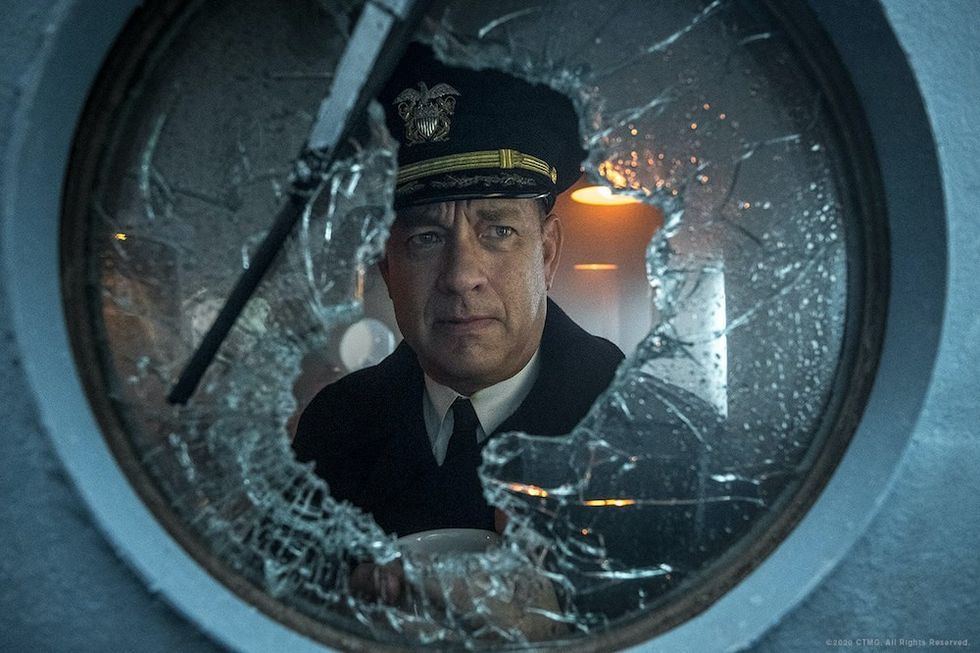
Large format photography
Hanks’ (a renowned WW2 buff) script was reportedly very, very technical with dialogue composed of rudder commands, targeting, vectors, and nautical codes. Schneider also says the book by C.S Forester on which the film is based includes such exact details of ship positions and commands that it could be used to map the battle.
“The drama lay in the white parts of the page and written in such a way that it left the staging of the scene open to interpretation,” says Johnson. “It was only in rehearsal with the actors that we were able to connect the dots and pull the meaning of a scene together. It’s a big chess game with life and death consequences and the truth to this lies in Hanks’ reaction before and after he says his lines.”
This approach to the film fed into the visual treatment, which was to shoot handheld using large format photography despite being, for most of the movie, in the confines of a 10ft x 18ft pilothouse set.
“Aaron wanted the camera in that 2 ft to 3 ft range,” Johnson explains. “An immediate advantage is that the longer focal length adds a textural depth to the set. It’s something the audience will respond to almost subliminally, but we were less interested in showing detail associated with large-format shooting, compared to how the optics would perform.”
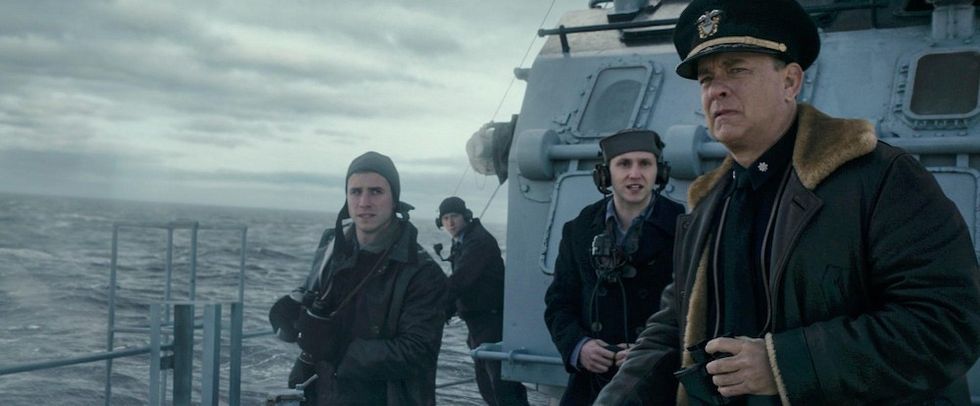
Johnson selected Panavision’s Millennium DXL which has a Dragon 8K VistaVision sensor with Sphero 65 lenses. At the time principal photography began in January 2018, the ARRI Alexa LF was not yet available while the DXL2 proved out of the range of the picture’s $50M budget, modest for a Sony Pictures film.
“I’ve been a big anamorphic fan since I first started out as a cinematographer,” Schneider explains. “The reason is that you can actually make a more intimate film on a human level with anamorphic lenses then you can with spherical. The larger the format the longer the focal length can be to get the shot you need.
“So, if I’m jammed in a corner with large format on Greyhound, instead of 21mm, now I can use a 25mm or 40mm and get much the same shot and have a more natural focal length that doesn’t feel like looking through a peephole on a door. It means I can get up next to Tom and explore the reactions on his face, which shows the weight of the decisions he has to make. Greyhound is a character study in that regard, so I wanted to get the audience up close up to the actors—large format photography translates into intimacy.”
It was a feat complicated by shooting on a gimbal elevated 14 feet in the air and continually rocking at often severe angles to simulate motion on deck.
“Even in a ‘static’ frame when the actor was 3 feet away and standing still, the operator is pulling focus from 2 feet to 4 feet,” Johnson says. “This was all done largely by feel. The gimbal is moving one way, the actors are moving another, and the operators are also moving. The assistant is able to watch on a monitor, but not only are they and the monitor also rocking but the signal has a very slight delay. So, if they relied on just the monitor, they’d be reacting to a moment that has already happened.”
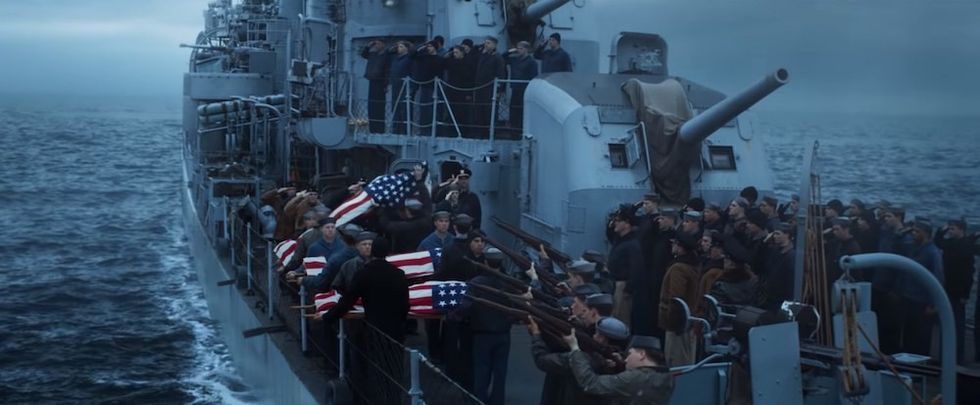
VFX, lighting and white screen
The film was almost entirely set on sound stages in Louisiana apart from 5 days on the museum ship USS Kidd moored on the Mississippi at Baton Rouge. As such, it could have been shot using a set ringed with LED screens in a virtual production scenario, which is en vogue for shows like The Mandalorian.
The budget precluded this to a large degree but it was also a prep issue. Schneider explains, “If you are going to take true advantage of LED backlots, you have to basically pre-produce your background footage, and in this instance, it would have required huge amounts of knowledge about the state of the ocean, state of the weather, the position and lighting of ships which would have been cost-prohibitive and less flexible to making creative decisions on set.”
Instead, Schneider charged Johnson to learn all he could about life on board ship in order to design a lighting scheme that would also be a blueprint for VFX.
“Tom’s script breaks down the story into 4-hour ‘Watches’ signifying the rotation of crew on the bridge,” Johnson explains. “I used these precise times to create a manifesto of how the light would look at different times.

His research led to thinking about detail such as the sea state, the height of the waves, and even the air quality. “Because the whole movie takes place over 3 and a half days, I could sort of map the whole movie out. I could actually articulate scene by scene exactly what color the water would be, exactly what the horizon would look like, the wind, and the color of ambient light in accordance with the time of day and what needed to happen and what needed to be functioning on the ship. I could actually work out a whole logic.
His manifesto went up the chain so that Schneider, VFX, and the producer (which includes Hanks) agreed to it. “Since we were just shooting all the foregrounds, all the backgrounds (of ocean, skies) that had to be created in post had to marry what I was lighting for, particularly at night. At night, we needed to be able to see the horizon so you get a feeling of movement. You need to be able to see other ships that the crew could see, so my feeling was—okay, if you’re on the ship, you’re eyes are going to get used to the darkness, plus there could be a little bit of atmosphere blowing around which would help open the shadows up.”
This information was translated scene for scene into color temperatures programmed for a series of SkyPanels on set and backlighting a radius of muslin sheets, with additional grid-cloths for sky above the set.
“I’d shot white screen for a scene set in a suborbital aircraft on Captain America where lots of light would reflect from the metal interior. I wanted to avoid the contamination of green light reflected from green screen,” Johnson says. “It provided a solid base for the lighting scheme that didn’t look like an artificial Hollywood [green screen] lighting job and from which the VFX team was able to pull keys very effectively.”
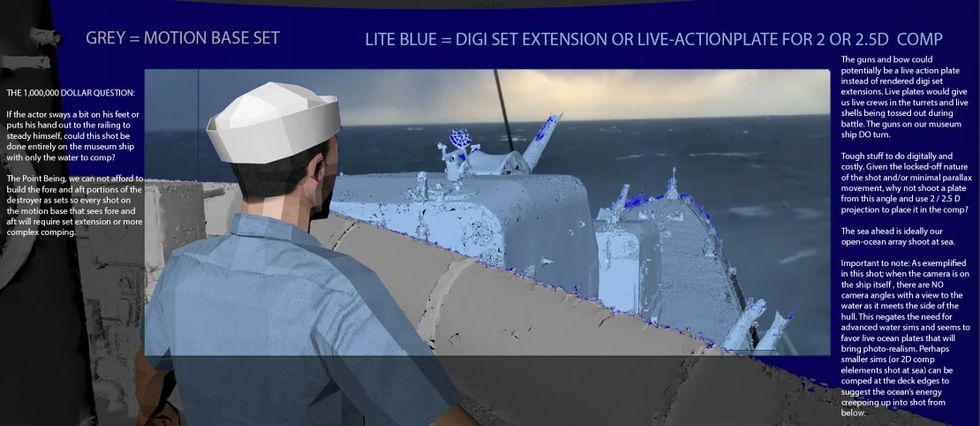
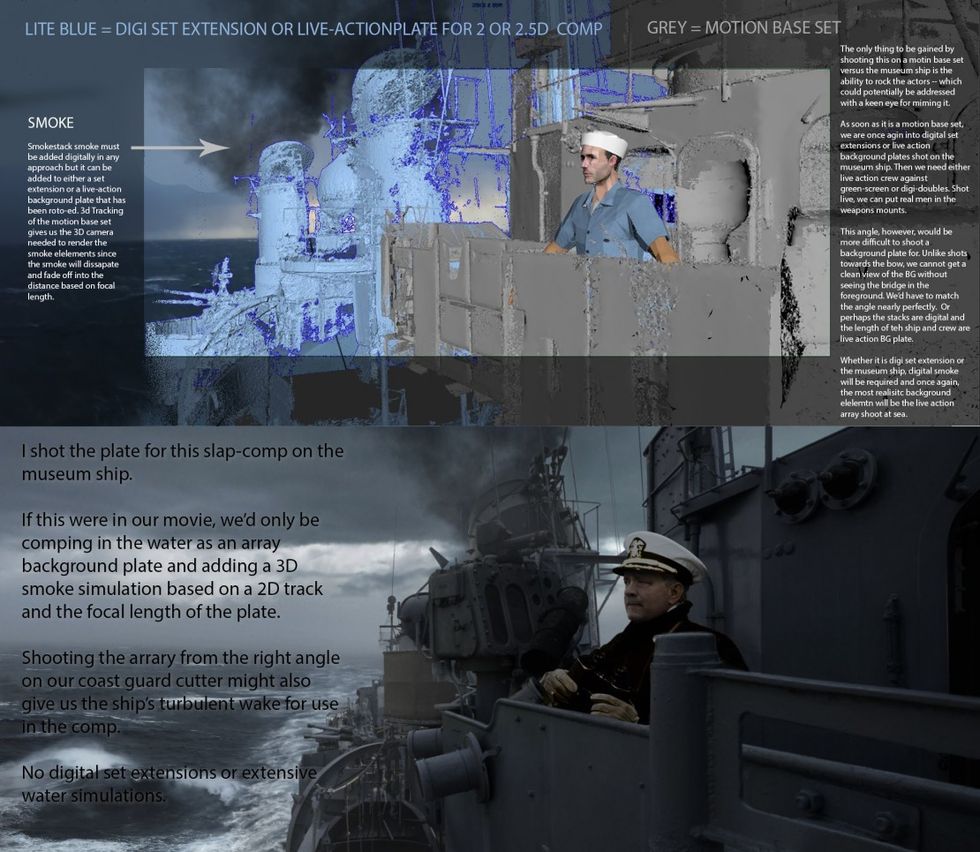
When your director is also a DP
The comparison with Close Encounters drove the extent of research, which Schneider demanded of his heads of department. For this endeavor, they were aided by actor and technical advisor Dale Dye who has provided military consulting services to films from Platoon to Band of Brothers.
“I learned that the Sonar ping, which is familiar from any submarine movie, is sent out at exact intervals but as the vessels come closer, the distance between those pings decreases since the sonar travels less far,” Schneider explains. “Knowing that meant I could film inserts of the Sonar so that, in cutting the scene, I could increase the tempo of the ping and the tension of the scene—in the same way you would increase the tempo of the score. It’s one very precise technical aspect that you can turn into drama and I wanted Shelly to learn as much as he could in order to help find creative ways to use some of the more technical aspects of our setting and give us a bigger palette to tell the story.”
It is worth asking how both DP and director reacted to working with one another for the first time, especially because one of them is a former DP.
“Aside from technically knowing how to do a crane shot or what is harder or easier to light, my instinct is always to push for more,” Schneider says. “Cinematographers want to make the best image they can and will beg, borrow, and steal to get that done. When I was a DP, it might have been as minute as altering the angle of a clock to catch a better reflection.
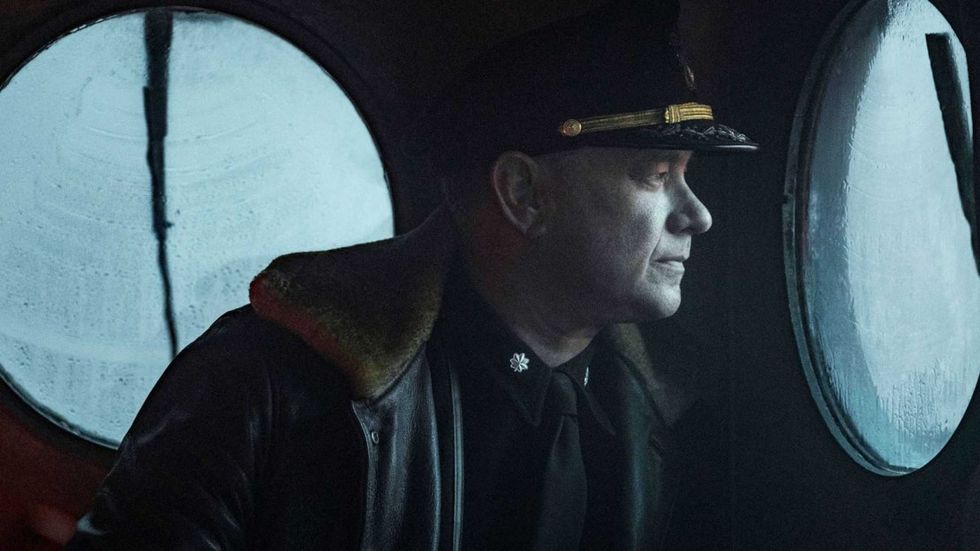
He continues, “The relationship between a director and a DP can be a mismatch. A director’s impatience or ambition can interfere with the ambition and vision of the cinematographer but, hopefully, Shelly feels we pulled together as a team.”
Johnson relates that he was really surprised during rehearsal, that the director would stand at the opposite side of the set to him. “Normally, that’s not a good sign,” he says. “But that really wasn’t it at all. We were just kind of examining the shot from different angles and then swap notes about what we saw. Probably 9 times out of 10 we would go with where he was standing.”
Greyhound premiers on Apple TV+ on 10 July.




